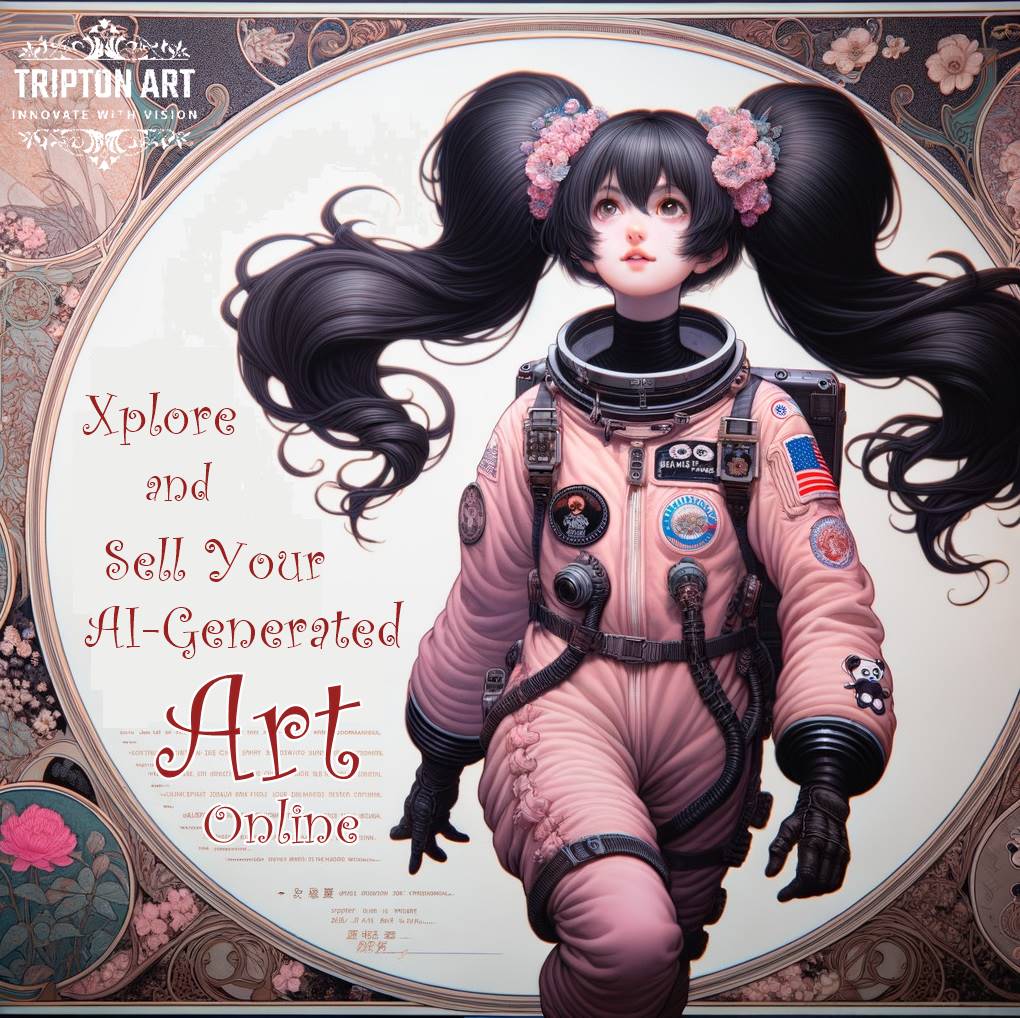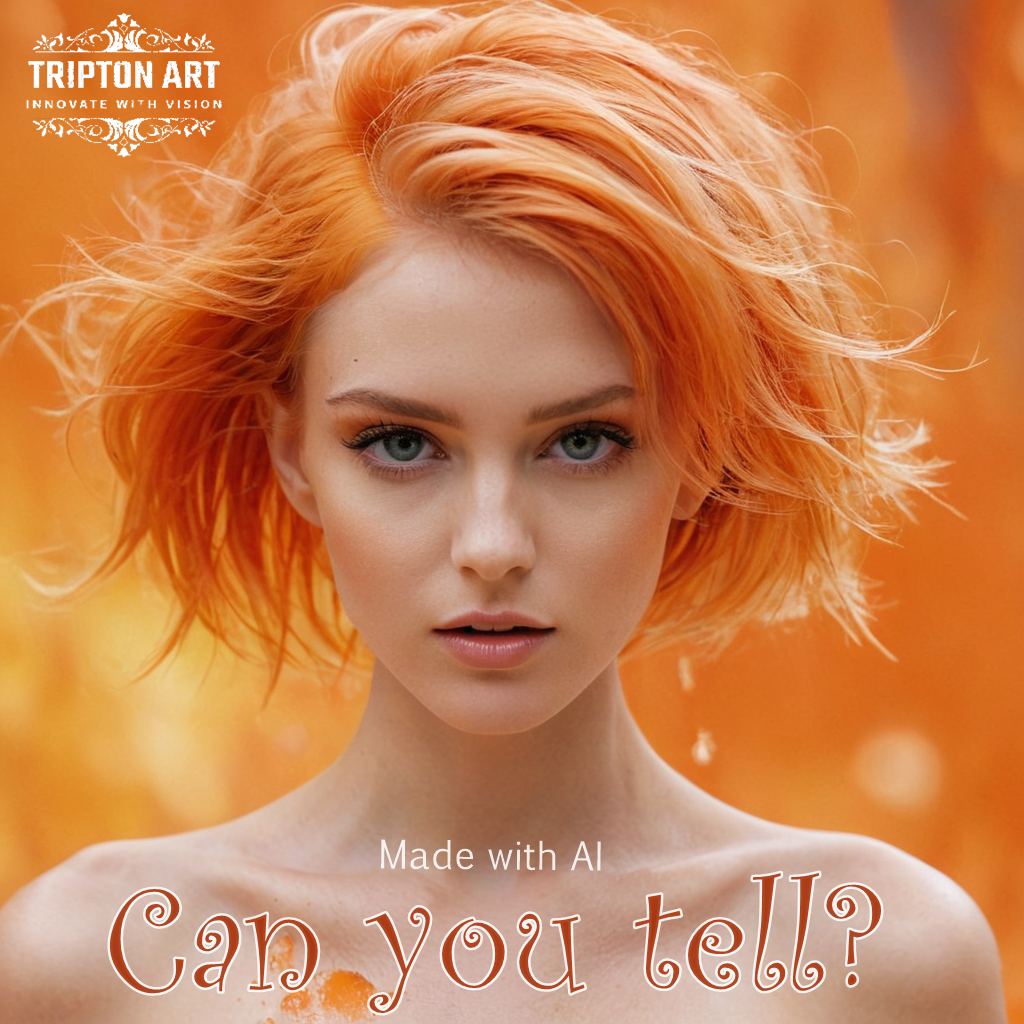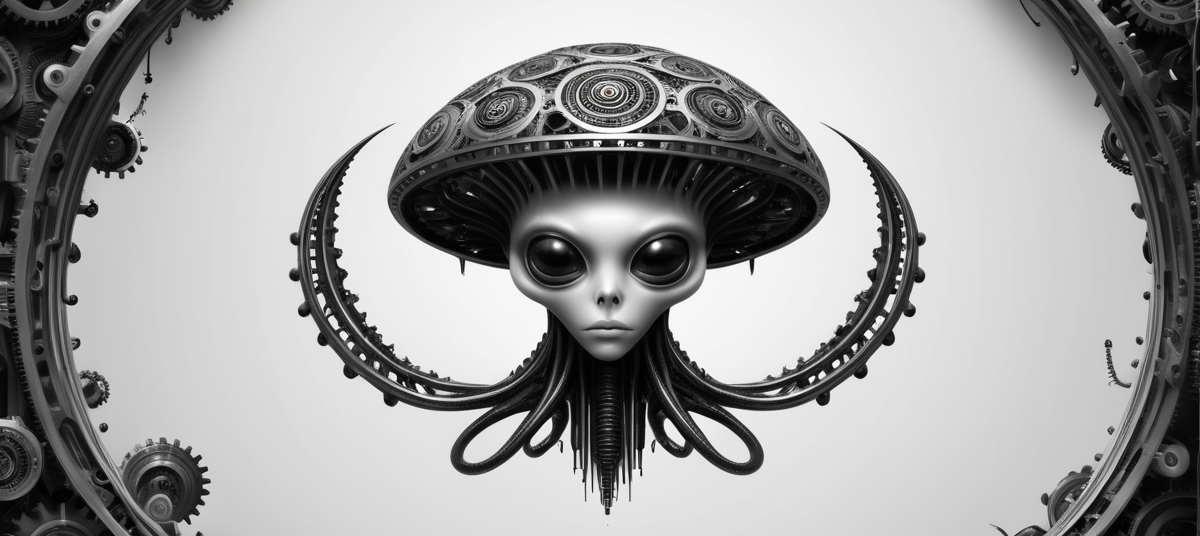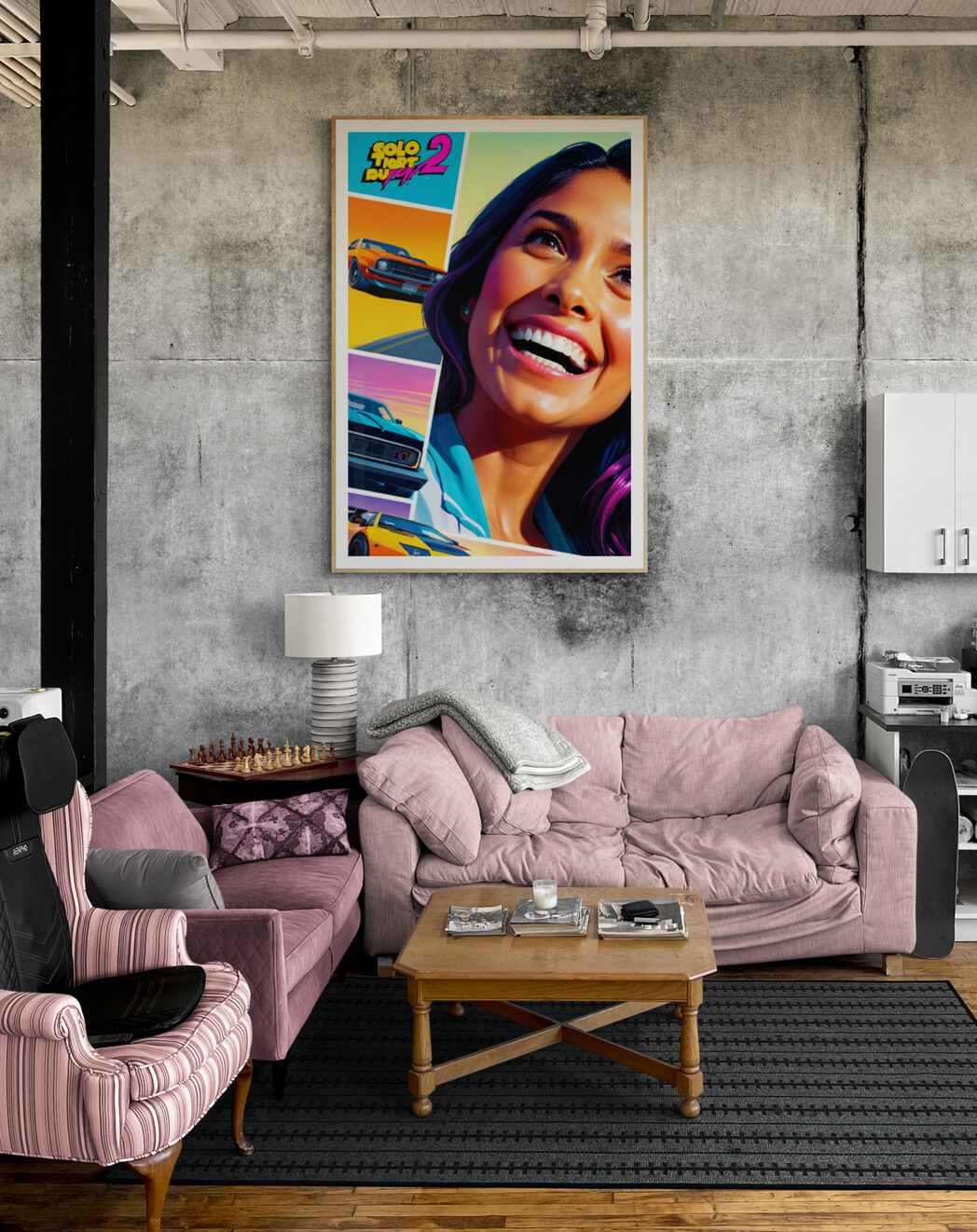In the ever-evolving landscape of the digital age, AI-generated art has emerged as a groundbreaking avenue for both creators and collectors of digital art. With the fusion of technology and creativity, artists now have the ability to produce unique and captivating pieces that resonate with audiences worldwide. For those looking to capitalize on this burgeoning market, selling AI-generated art online can prove to be a lucrative endeavor. Here’s how to navigate this exciting terrain and turn your digital creations into profit.
Table of Contents
1. Conduct Market Research
Before diving headfirst into the world of selling AI-generated art online, it’s essential to conduct comprehensive market research. Start by exploring existing platforms such as DeviantArt, Redbubble, and Society6 to gain insights into the types of digital artwork that are currently selling successfully. Analyze trends, styles, and themes to understand what resonates with online buyers and identify potential gaps in the market. By understanding the preferences of your target audience, you can tailor your digital creations to meet their demands effectively. (Resources: 6 Amazing Free AI Tools For Market Research (2024)… 1)

Exploring Niche Markets
If you are going to sell AI-generated art online than one effective strategy in market research is to identify and explore niche markets. Niche markets are specific segments of a broader market with unique preferences and interests. By targeting these specialized audiences, digital artists can tailor their artwork to meet specific demands, increasing the likelihood of sales for their AI-generated art. Resources: How can AI be used to identify and target niche markets that may have been overlooked in the past? (2)
Utilizing Social Media Platforms
Social media platforms like Facebook, Twitter or Instagram offer a treasure trove of insights into digital niche markets where you can sell your AI-generated art online. For instance, consider visiting pages or groups dedicated to particular themes or interests, such as communities centered around specific dog breeds like poodles or Labradors. Engaging with these communities allows digital artists to understand the preferences and tastes of their members, providing valuable inspiration for creating targeted AI-generated art.
Analyzing Audience Engagement
While exploring niche markets on social media, pay close attention to audience engagement. Take note of the types of content that receive the most likes, comments, and shares within these communities. This data offers valuable clues about the subjects, styles, and themes that resonate most strongly with the target audience, guiding the creation of AI-generated artwork that aligns with their interests.
Tailoring Artwork to Specific Interests
Armed with insights from niche market research, artists can craft digital artworks tailored to the specific interests of their target audience. For example, if a Facebook group dedicated to poodles exhibits a fondness for whimsical illustrations featuring the beloved dog breed, artists can leverage AI tools to create charming and imaginative poodle-themed artwork that caters directly to this audience’s preferences. – Resource: Where can I sell AI art (Midjourney, DALL-E & more) 3)
Fostering Community Engagement
In addition to creating artwork tailored to niche interests, actively engaging with the community can further enhance market research efforts. Participate in discussions, seek feedback on artwork concepts, and foster genuine connections with community members. Building rapport within niche communities not only strengthens artist-audience relationships but also provides invaluable insights that can inform future artistic endeavors, so you will be able to sell your AI-generated artwork online ASAP.
2. Create High-Quality Artwork
The quality of your digital artwork plays a pivotal role in attracting buyers and driving sales. Invest time in honing your skills and refining your artistic style to ensure that your creations stand out in a saturated market. Experiment with different techniques, color combinations, and compositions to develop a signature aesthetic that sets you apart from the competition. Additionally, leverage the power of AI tools and software to streamline the creation process and enhance the overall quality of your artwork. Creating high-quality digital artwork is a must if you want to successfully start selling your AI-generated artwork online.

Understanding AI Tools and Techniques
Before diving into the creation process, it’s crucial to familiarize yourself with the AI tools and techniques available for generating artwork. From generative adversarial networks (GANs) to style transfer algorithms, AI technology offers a diverse array of tools that digital artists can harness to bring their creative visions to life. Take the time to explore different AI platforms, software applications, and tutorials to gain a solid understanding of the capabilities and limitations of each tool.
Mastering the Fundamentals of Art and Design
While AI technology can automate certain aspects of the creative process, a strong foundation in art and design principles remains essential for producing high-quality artwork. Whether it’s understanding color theory, composition, perspective, or anatomy, mastering the fundamentals of art and design empowers digital artists to make informed decisions and imbue their AI-generated artwork with depth and meaning. Dedicate time to study traditional art techniques and experiment with applying them within digital spaces. Doing so will will increase your ability to sell AI-generated art online.
Experimenting with Styles and Techniques
One of the greatest advantages of AI-generated artwork is its versatility in exploring diverse styles and techniques. Experiment with different artistic styles, from realism to abstraction, and explore various techniques such as brush strokes, textures, and effects. Embrace curiosity and experimentation, allowing yourself to push the boundaries of what’s possible with AI technology. Keep an open mind and be willing to explore unconventional approaches to creating digital artwork. – Resource: Training an AI to imitate your own art style (4)
Incorporating Personalization and Customization
While AI tools can automate certain aspects of the creative process, incorporating personalization and customization into your artwork adds a unique touch that resonates with audiences. Experiment with customizing AI algorithms, training LoRa’s or creating checkpoints, adjusting parameters, and combining multiple techniques to create digital art that reflects your individual style and vision. Embrace imperfections and quirks, as they often lend character and authenticity to AI-generated artwork online.
Refining and Iterating
Creating high-quality AI-generated art online is an iterative process that requires patience, perseverance, and a willingness to refine your craft. Take the time to review and critique your artwork objectively, identifying areas for improvement and refinement. Solicit feedback from peers, mentors, or online art communities to gain fresh perspectives and insights. Iterate on your digital designs, making incremental adjustments until you’re satisfied with the final result.
Embracing Collaboration and Community
Artistic growth and development thrive in collaborative and supportive environments. Engage with fellow digital artists, AI enthusiasts, and online art communities dedicated to digital art to share knowledge, exchange ideas, and collaborate on art projects. Embrace the opportunity to learn from others, whether it’s through collaborative projects, workshops, or online art tutorials. By fostering a sense of community and collaboration, digital artists can inspire one another and push the boundaries of what’s possible with AI-generated artwork.
3. Utilize Quality Mockups
Presentation is key when it comes to selling digital art online. Utilize high-quality mockups to showcase your artwork in a visually appealing and professional manner. Whether it’s a digital rendering of a canvas print or a mockup of a framed digital artwork, ensure that the presentation accurately reflects the style and essence of your creations. It is recommended to invest in premium mockup templates or enlist the help of graphic designers to create customized mockups that highlight the unique attributes of your artwork. The vertical PSD frame wall art mockups are generally preferred over JPG or PNG mockups as they can be easier modified and provide for much higher quality.
Importance of Presentation in Online AI-Generated Art Sales
First impressions matter, especially in the digital realm of AI-generated art where visual appeal plays a crucial role in capturing audience attention. Quality wall art mockups for your AI-generated paintings and portraits will serve as a bridge between your digital artwork and potential buyers, providing a realistic preview of how the digital artwork will appear in real-world settings. By presenting your AI-generated art in an aesthetically pleasing and professional manner, you can create a positive impression that resonates with buyers and enhances perceived value.

Choosing the Right Mockup Templates
Selecting the right mockup templates for your digital art is essential for effectively showcasing your AI-generated artwork. Consider factors such as style, format, and compatibility with your digital artwork’s dimensions and orientation. Choose mockup templates that complement your artistic style and align with the intended presentation context, whether it’s a framed artwork, canvas print, digital display, or merchandise item. Look for mockup templates that offer customization options, allowing you to adjust elements such as background, lighting, and shadows to enhance visual impact. Again, go for the PSD mockups if quality is important to you. For free high quality PSD mockups visit Anthony Boyd graphics, no gimmick!
Enhancing Realism and Immersion
The goal of quality mockups is to create a sense of realism and immersion that transports viewers into the world of your artwork. Pay attention to details such as lighting, perspective, and scale to ensure that the mockup accurately reflects the intended presentation context. Experiment with different angles and compositions to showcase your artwork from its most flattering perspective. Use high-resolution images and realistic textures to create a tactile and lifelike representation of your AI-generated art. You can get started right away with these free photo-realistic PSD Mockups online .
Showcasing Versatility and Adaptability
AI-generated artwork often lends itself to a wide range of presentation formats and applications. Use mockups to showcase the versatility and adaptability of your artwork across different mediums, surfaces, and products. Explore mockup templates that feature various framing options, display settings, and product configurations to demonstrate the potential of your AI-generated artwork in diverse contexts. Highlighting the flexibility of your AI-generated art increases its appeal to a broader audience and opens up opportunities for customization and personalization. For more free mockups check out this page.
Investing in Professional Mockup Services
While there are many free mockup resources available online (checkout freepik.com), investing in professional mockup services can elevate the presentation quality of your AI-generated artwork significantly. Professional mockup services online offer a wider selection of high-quality templates, customization options, and technical support to ensure a seamless experience. Consider hiring graphic designers or wall art mockup specialists to create custom mockups tailored to your artwork and branding requirements. The investment in professional mockup services online pays off in the form of enhanced art presentation quality and buyer perception.
Iterating and Optimizing
The process of utilizing quality wall art mockups is iterative, requiring experimentation, feedback, and optimization to achieve optimal results. Continuously refine your wall art mockups based on feedback from peers, mentors, or potential art buyers. Test different wall art mockup templates, settings, and variations to determine which combinations yield the best results in terms of visual impact and buyer engagement. Stay open to constructive criticism and be willing to iterate on your mockup presentations to ensure they effectively showcase your AI-generated artwork online.
4. Leverage Online Marketplaces
When it comes to selling AI-generated art online, platforms like Etsy provide a versatile and accessible marketplace for artists to showcase and sell their digital creations. Create a compelling storefront that effectively showcases your digital artwork and provides potential buyers with all the necessary information, including pricing, dimensions, and shipping details. Utilize art-related keywords and tags strategically to optimize your listings for search engines and increase visibility within the platform.
Choosing the Right Marketplace
The first step in leveraging online marketplaces is to choose the right platform to showcase your AI-generated artwork. Consider factors such as audience demographics, pricing structures, and policies regarding digital art. Popular online marketplaces for selling artwork include Etsy, Society6, Redbubble, and ArtStation, each offering unique features and advantages for artists. Research multiple platforms to determine which aligns best with your artistic goals and target audience. – Resource: 7 platforms to sell AI art and make money (5).
Optimizing Your Artwork Listings
Once you’ve selected a marketplace, it’s essential to optimize your artwork listings to attract potential buyers. Pay attention to details such as title, description, tags, and keywords, ensuring they accurately reflect the style, theme, and medium of your AI-generated artwork. Use high-quality images or mockups to showcase your artwork in the best possible light, providing multiple angles and close-up views to highlight its unique features.
Pricing Your Digital Artwork Strategically
Pricing plays a crucial role in the success of your digital artwork’s listings on online marketplaces. Conduct market research to understand pricing trends within your niche and determine a competitive yet profitable pricing strategy for your AI-generated artwork. Consider factors such as the complexity of the artwork, licensing options, and production costs when setting prices. Experiment with different pricing tiers and promotional offers to gauge buyer response and optimize your pricing strategy over time.
While some digital artists prefer to use services such as printify.com in order to be able to deliver a physical product, others much prefer to avoid shipment and delivery, and instead they choose to limit their selection to downloadable content only. This obviously avoids a lot of work and organizing, but on the downside your products cannot be sold for as much money.
Creating a Compelling Storefront
A compelling storefront is essential for attracting and retaining art buyers on online marketplaces. Customize your storefront to reflect your brand identity and artistic style, incorporating elements such as a banner image, logo, and artist bio. Organize your artwork into categories or collections to make it easy for buyers to navigate and discover your creations. Provide detailed information about your artwork, including dimensions, materials, and shipping options, to instill confidence in potential buyers.
Promoting Your Artwork
While online marketplaces offer built-in exposure, proactive promotion is key to maximizing sales of your AI-generated artwork. Utilize social media platforms, email newsletters, and digital advertising to drive traffic to your marketplace listings. Engage with your audience regularly, sharing behind-the-scenes insights into your creative process and promoting special offers or new releases. Collaborate with influencers, bloggers, or other artists to expand your reach and tap into new audiences.
Providing Excellent Customer Service
Exceptional customer service can set you apart from competitors and foster loyalty among buyers. Respond promptly to inquiries and messages from potential buyers, providing helpful information and assistance as needed. Ensure a smooth purchasing experience by offering secure payment options, transparent shipping policies, and prompt order fulfillment. Encourage feedback and reviews from satisfied customers to build trust and credibility within the online marketplace community. If you would like to create your own AI chatbot than check out Perchance
5. Build Your Brand and Engage with Your Audience
Establishing a strong brand identity is essential for long-term success in the world of online art sales. Develop a cohesive brand image that resonates with your target audience and effectively communicates your artistic vision. Utilize social media platforms such as Instagram, Twitter, and Facebook to engage with your audience, share behind-the-scenes glimpses of your creative process, and promote your artwork. Building a loyal following not only increases your reach but also fosters a sense of community around your brand.
Crafting Your Brand Identity
At the heart of successful online art sales lies a compelling brand identity that resonates with your target audience. Your brand identity encompasses elements such as your artistic style, values, story, and aesthetic preferences. Take the time to reflect on what sets your artwork apart and what message you want to convey to potential buyers. Define your brand’s unique voice and visual identity, incorporating elements such as a logo, color palette, and consistent imagery across your online platforms.
Developing a Cohesive Online Presence
Consistency is key when it comes to building your brand online. Ensure that your brand identity is reflected consistently across all your online platforms, including your website, social media profiles, and online marketplace storefronts. Use cohesive branding elements such as logos, colors, and imagery to create a unified and memorable experience for your audience. Align your content strategy with your brand identity, sharing content that reinforces your artistic style, values, and narrative.
Engaging with Your Audience
Effective engagement with your audience is a cornerstone of building a loyal following and driving sales of your AI-generated art. Take the time to connect with your audience authentically, responding to comments, messages, and inquiries promptly and thoughtfully. Encourage dialogue and interaction by asking questions, soliciting feedback, and inviting your audience to participate in contests or polls.
Show appreciation for your supporters by acknowledging their contributions and fostering a sense of community around your brand. And with technology having advanced the way it has, you can do all that and more with an AI chat-bot or agent. To get started checkout Perchance, the most amazing chat AI I have ever used like free and no sign-up ? and they provide the best interface ever. Just train your chatbot and off you go!
Sharing Behind-the-Scenes Insights
Offering glimpses into your creative process can deepen the connection between you and your audience, fostering a sense of intimacy and authenticity. Share behind-the-scenes insights into your artistic journey, including work-in-progress shots, time-lapse videos, and explanations of your creative techniques. Take your audience on a journey behind the finished artwork, allowing them to appreciate the skill and effort that goes into creating AI-generated art. Transparency and authenticity are key to building trust and loyalty among your audience.
Leveraging Social Media Platforms
Social media platforms provide powerful tools for building your brand and engaging with your audience effectively. Choose platforms that align with your target audience and artistic niche, whether it’s Instagram, Twitter, Facebook, or TikTok. Share visually captivating content that showcases your artwork and personality, using hashtags and tags strategically to increase visibility and reach. Foster meaningful connections with your followers by actively participating in conversations, sharing relevant content, and collaborating with other artists or influencers.
Creating Value-Added Content
In addition to showcasing your digital artwork online, provide value-added content that enriches your audience’s experience and strengthens their connection to your brand. Consider creating tutorials, artist interviews, blog posts, or podcasts that offer insights into art techniques, industry trends, or creative inspiration. Position yourself as a thought leader within your niche, sharing valuable knowledge and expertise that positions you as an authority in the field of AI-generated art. By offering content that educates, entertains, or inspires your audience, you can cultivate a loyal following that supports your artistic endeavors.
6. Stay Agile and Adapt to Changing Trends
The digital art landscape is constantly evolving, with new trends and technologies shaping the industry at a rapid pace. Stay informed about emerging trends, tools, and techniques to remain competitive in the market. Experiment with new styles and mediums to keep your artwork fresh and innovative. Additionally, be open to feedback from your audience and be willing to adapt your approach based on market demand and consumer preferences.
Embracing Technological Advancements
As AI technology continues to evolve, artists must stay informed about the latest advancements and innovations in the field. Keep abreast of new AI algorithms, software updates, and emerging tools that can enhance your creative process and expand the possibilities of AI-generated art. Experiment with different AI techniques, such as style transfer, generative adversarial networks (GANs), and neural style transfer, to push the boundaries of your artistic expression.
Experimenting with New Styles and Mediums
The beauty of AI-generated art lies in its versatility and adaptability to different styles and mediums. Don’t be afraid to step outside your comfort zone and experiment with new artistic styles, techniques, and mediums. Whether it’s exploring abstract art, surrealism, or hyperrealism, embracing variety keeps your artwork fresh and engaging for your audience. Stay curious and open-minded, allowing yourself to evolve and grow as an artist with each new exploration.
Monitoring Artistic Trends and Influences
Trends in art, fashion, design, and popular culture can have a significant impact on the demand for AI-generated art. Stay attuned to current artistic trends and influences by monitoring industry publications, attending art exhibitions, and following influential artists and creators on social media. Identify emerging themes, motifs, and aesthetic preferences that resonate with your target audience and incorporate them into your artwork to stay relevant and appealing.
Adapting to Market Demand and Consumer Preferences
The preferences and tastes of digital art buyers are constantly evolving, necessitating artists to adapt their creative output to meet changing market demand. Pay attention to feedback from your audience, analyze sales data, and gather insights from market research to identify shifting trends and consumer preferences. Adapt your artistic approach accordingly, creating artwork that resonates with your audience and aligns with current market demand.
Collaborating and Networking with Peers
Collaboration and networking with fellow digital artists, designers, and creators can provide valuable opportunities for learning, growth, and exposure. Engage with online communities, forums, and social media groups dedicated to AI-generated art to share ideas, exchange feedback, and collaborate on projects. Collaborative efforts allow you to leverage the diverse perspectives and expertise of your peers, fostering innovation and creativity in your artistic practice. – Resources: How to connect with other artists and boost your art business (6)
Evolving Your Brand and Artistic Identity
As an artist, your brand and artistic identity are continually evolving reflections of your creative journey and personal growth. Embrace change and evolution as natural aspects of the artistic process, allowing yourself the freedom to reinvent and refine your brand over time. Stay true to your core values and artistic vision while remaining flexible and adaptive to new opportunities and challenges that arise.
In conclusion:
Selling AI-generated art online offers a wealth of opportunities for artists to showcase their creativity and generate income. By conducting thorough market research, creating high-quality artwork, utilizing quality mockups, leveraging online marketplaces, building your brand, and staying agile, you have the blueprint for success in this dynamic and exciting industry. With dedication, perseverance, and a touch of creativity, you can turn your passion for art into a thriving online business.
If you found this blog post insightful and inspiring, don’t hesitate to share it with your friends and fellow art enthusiasts. Your support helps to spread the love for AI-generated art and fosters a vibrant community of creativity. Additionally, we’d love to hear your thoughts and feedback in the comments below. What resonated with you? Do you have any questions or ideas to share? Your contributions enrich the conversation and fuel our passion for exploring the possibilities of AI in art. Thank you for being a part of our journey!


3 thoughts on “Discover the Blueprint for Success: 6 Tips for Selling AI-Generated Art Online”